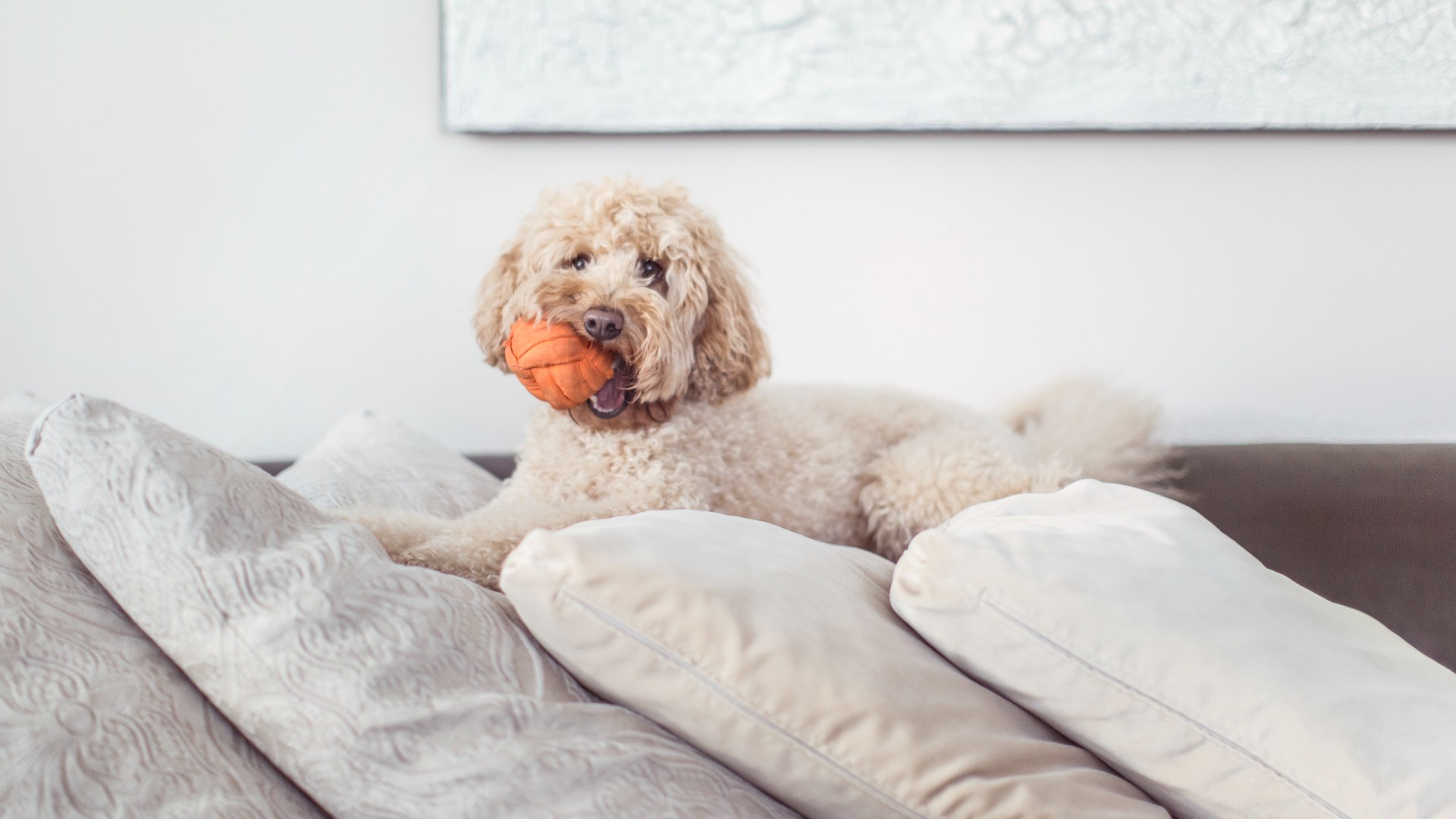Trainer reveals how to help your pup with separation anxiety — and it really surprised us!
Using food can be counterproductive, so try this instead…

Disclaimer
Unless specifically stated, any expert comments quoted in this news piece have been taken directly from the Instagram post cited below.
Something dogs can often struggle with is separation anxiety. It’s understandable – dogs are sociable animals, and don’t like being away from their favorite people for too long.
But, sometimes you’ll have to be away from your pup. Whether you’re going out to meet a friend, or you’ve got a work meeting you just can’t miss, sooner or later you’ll probably have to leave your furry friend home alone for a little while.
It can be tempting to reach for the best dog treats before you go, but there are plenty of other ways you can keep your dog content and help them with separation anxiety.
The certified dog behavior coaches at the Calm Canine Academy have explained what you can try in a new Instagram post.
A post shared by Calm Canine Academy (@calmcanineacademy)
A photo posted by on
They explain that dogs can become suspicious of food when left alone with it, and some pups who struggle with separation anxiety might actually be panicking too much to eat.
As the Academy says, “Separation anxiety is an actual panic disorder. Dogs who suffer from SA are likely in severe states of panic. In many cases, snacks are the last thing on their mind.”
And in many cases, food just simply isn’t effective, and doesn’t help with counter-conditioning your pup.
PetsRadar Newsletter
Get the best advice, tips and top tech for your beloved Pets
Your dog wants you to come back – they don’t want food, and it doesn’t make them feel better, or soften the blow of you not being there. (Here are 32 ways to keep your pet entertained when you’re not there, just in case you might need them!)
Food can mask body language, too. “Some dogs will eat even when they are over threshold,” the Academy says. “In these cases the dog eating can mask their feelings and lead to us pushing too far in training sessions, ultimately making things worse.”
When it comes to how to reduce separation anxiety in dogs, desensitization is best.
What you want to do is gradually expose your dog to time alone – without food as a distraction. Over the course of many months, gradually get your dog used to spending seconds, minutes, and then hours alone, with your dog fully relaxed.
And just how long can you leave a dog alone? If you have an adult dog, many organizations recommend not leaving them alone for longer than four to six hours on a regular basis, but it can vary from dog to dog, based on their own individual needs.

Adam is a freelance journalist specialising in pets, music and culture, and mental health and wellbeing. He investigates and writes the large majority of news on PetsRadar, and collaborates with veterinary experts to produce informative pet care content.
Adam has a journalism degree from Southampton Solent University and a masters degree in Magazine Journalism from Cardiff University. He was previously senior editor at dog advice website DogTime.com, and has also written for The Independent, GoodToKnow and Healthline.
He owns two rescue cats, Bunny and Dougie, and has also previously had a rabbit, fish and Roborovski dwarf hamsters.
